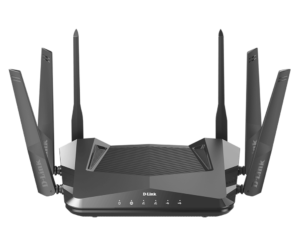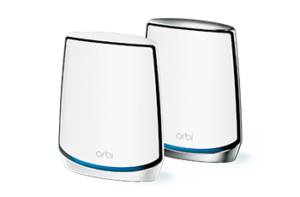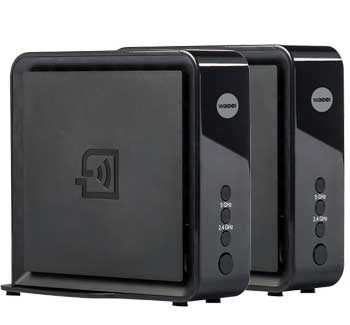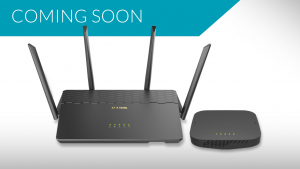Wi-Fi to become strong as a location and range-finding technology
Article – From the horse’s mouth

Multi-antenna Wi-Fi 6 and similar routers like this D-Link router could be part of allowing Wi-Fi to work as a location-tracking, range-finding and way-finding technology
Wi-Fi Alliance
Wi-Fi Location™: Performance drivers for Wi-Fi® ranging technologies and its achievable accuracies
My Comments
Qualcomm is driving Wi-Fi further as a location and ranging tool through the use of its own silicon. This is in addition to the Ekahau effort to use Wi-Fi as a real-time location system for business.
But it’s more about making sure that the Wi-Fi network is capable to answer Bluetooth and UWB wireless technologies in this space. This is being facilitated by Wi-Fi devices having multiple antennas and operating on multiple bands, That can exploit different bands’ radio-frequency characteristics like transmission / reception range.
In the business world, this may be about staff or asset tracking, indoor navigation amongst other uses. It may even be about “pointing” a laptop, tablet or smartphone to the closest printer or similar peripheral so you cut down on the amount of time it takes to select that peripheral. Airports, shopping centres and similar places will benefit in the form of enhanced indoor navigation for staff and end-users.
But as far as the Wi-Fi home network is concerned, this could come in to its own in a strong way.
This would be facilitated by the use of most recent-issue value-priced and premium Wi-Fi routers having multiple antennas thanks to newer Wi-Fi iterations like Wi-Fi 5, Wi-Fi 6 and Wi-Fi 7 that implement various MIMO techniques; along with the ability to work on multiple wavebands.
Then there is an increased interest in multiple-access-point Wi-Fi networks thanks to Wi-Fi repeaters, distributed Wi-Fi (mesh) networks and access points that use Ethernet or wired “no-new-wires” networking technology like powerline networks as a backhaul. This is often implemented to fill in Wi-Fi dark spots within your home caused by things like highly-dense building materials or metal used as part of building materials or insulation.

Even distributed Wi-Fi setups like this NETGEAR Orbi with WI-Fi 6 system will serve the same purpose
One key use case for the home is the smart-home technology based on “Internet of Things” devices. The classic use cases would be the robot vacuum cleaners that move around your house, keeping the floors clean or the robot lawnmowers that keep your lawn mown down.
In the context of home and automotive security, it could be about geofencing and similar algorithms that limit the operation of smart locks or vehicle locking systems. It could even extend to preemptive control of heating / air-conditioning and lighting so when you are near home, the heating or lights come on.
To some extent, this could extent to healthcare at home including ageing at home. For example, this may be about fall detection or wandering detection for dementia sufferers. Or it could be about proof-of-presence and time/attendance records for paid carers.
The “nearest peripheral” location will come in to its own with the home network if you have multiple network-capable TVs or printers on your premises. Here, it could be about having the default printer being the one that is closest to you even if you take your laptop to the kitchen for example. It could also extend to use of Wi-Fi Aware for “across-the-room” use cases like transferring data between devices or user discovery with social media and online games.
Therefore in a lot of use cases, Wi-Fi will be valued as a location and ranging technology even if the network of concern is a small network that covers a house or small business.


